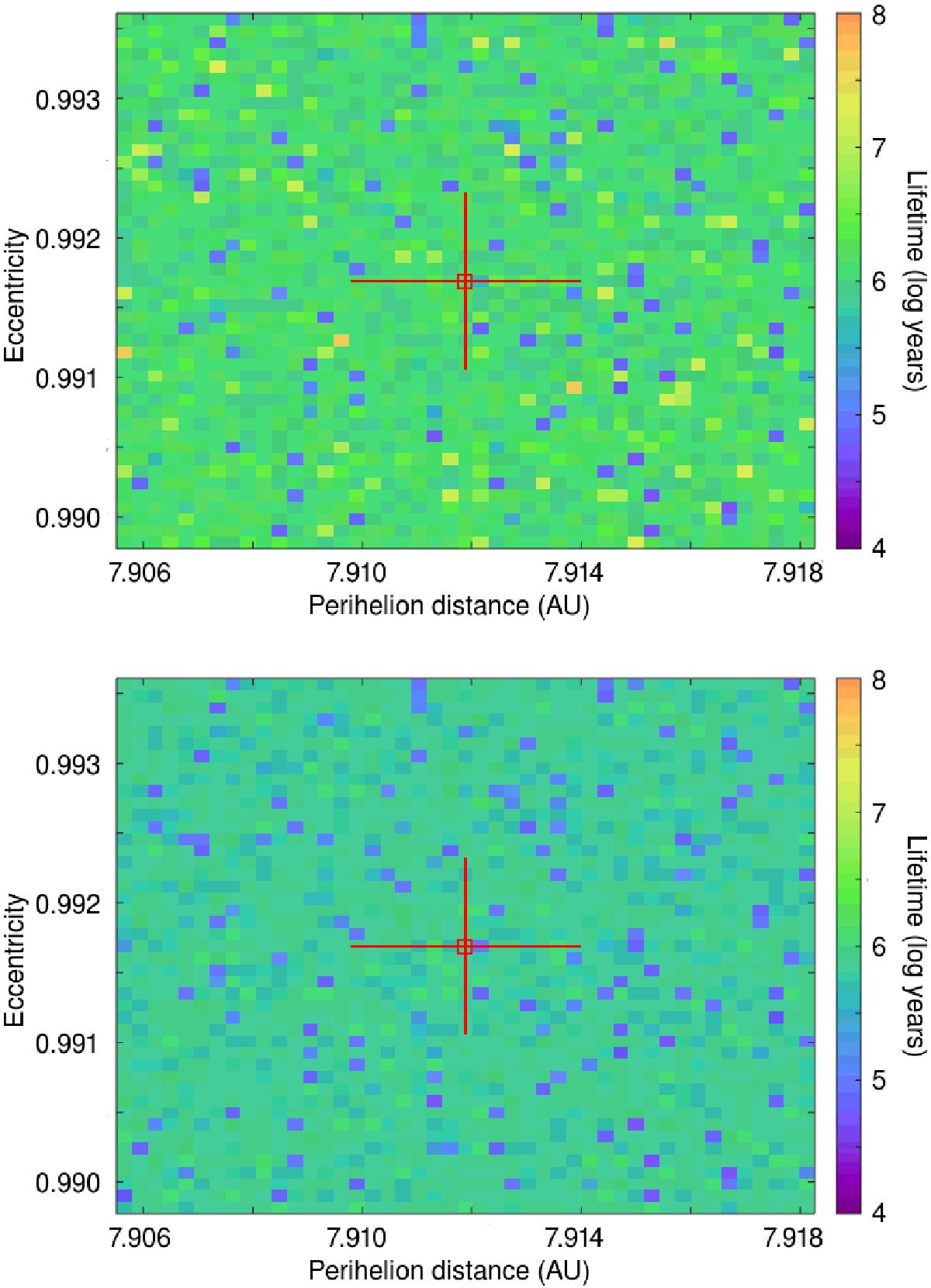Fig. 6

Mean (upper) and median (lower) lifetimes of 2013 AZ60 as a function of the initial perihelion distance, q, and eccentricity, e, of the orbit tested. The location of the best-fit orbital solution for 2013 AZ60, as detailed in Table 4, is shown by the hollow square at the centre of the figure, with the ±1σ uncertainties on the perihelion distance and eccentricity denoted by the solid black lines that radiate from that box. Each coloured square in the figures shows the mean (or median) lifetime of the 45 individual runs carried out at that particular a−e location. Each of those 45 runs tested a different orbital inclination for 2013 AZ60, evenly distributed across the ± 3σ uncertainty range on the best-fit orbital solution. As was the case with the high-eccentricity Centaur 2012 DR30 (Kiss et al. 2013), the stability of the orbit of 2013 AZ60 does not vary significantly across the range of perihelion distance and eccentricities tested in this work – a reflection of the relatively high precision with which the object’s orbit is known.
Current usage metrics show cumulative count of Article Views (full-text article views including HTML views, PDF and ePub downloads, according to the available data) and Abstracts Views on Vision4Press platform.
Data correspond to usage on the plateform after 2015. The current usage metrics is available 48-96 hours after online publication and is updated daily on week days.
Initial download of the metrics may take a while.




